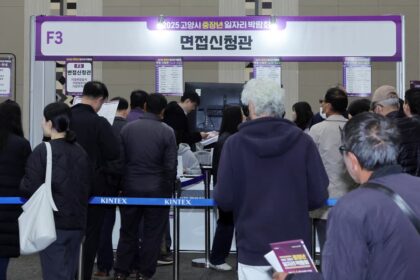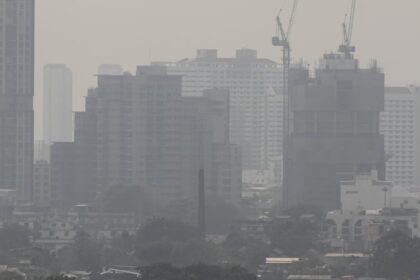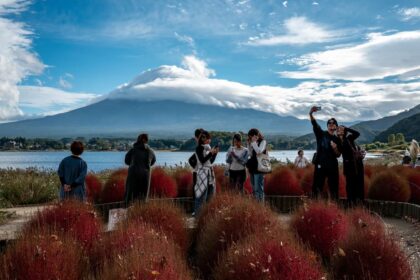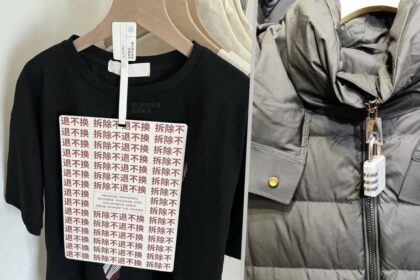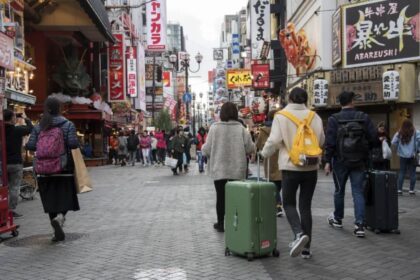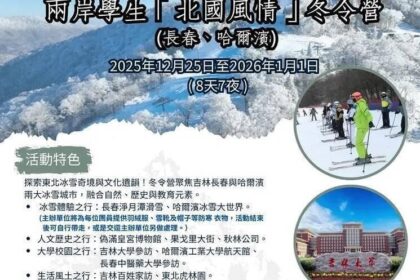A new clash over trade and security
China has informed Tokyo that it will suspend imports of Japanese seafood, a move that jolts economic ties and heightens a fast growing diplomatic dispute. The step comes less than five months after Beijing eased a near two year embargo tied to the release of treated water from the Fukushima Daiichi nuclear plant. Before the 2023 ban, mainland China and Hong Kong together accounted for more than a third of Japan’s seafood exports in 2022, making the Chinese market central to the livelihood of many Japanese fisheries and processors.
- A new clash over trade and security
- What triggered the suspension
- Fukushima water release and the science debate
- The trade stakes for fisheries and markets
- Legal backdrop under WTO rules
- Signals of wider retaliation and diplomatic fallout
- How Japan is responding
- Regional and strategic context
- What happens next
- Key Points
The decision arrives during a sharp exchange over Taiwan after Prime Minister Sanae Takaichi told parliament on November 7 that an attack on Taiwan could qualify as a “survival threatening situation” for Japan under the 2015 security law. That designation allows the Self Defense Forces to act in collective self defense to protect Japan when an attack on a close partner threatens the country’s survival.
Beijing condemned the comments as interference in China’s internal affairs and demanded a retraction. Takaichi has refused to withdraw her remarks. In early November, shipments of frozen scallops from Japan had just restarted after a lengthy pause. The renewed suspension signals that the thaw in seafood trade may not hold as political tensions deepen.
What triggered the suspension
Chinese authorities have linked the renewed halt to additional monitoring of the treated wastewater discharge from the damaged Fukushima plant. Officials in Beijing say food safety and public health are paramount and that enhanced oversight is needed before imports can continue.
What did Japan say about Taiwan
In her Diet testimony on November 7, Takaichi said that a Chinese attack on Taiwan could create a “survival threatening situation” for Japan. The 2015 security legislation defines that situation as one where an armed attack on a partner country poses an existential threat to Japan, potentially allowing the use of collective self defense. Takaichi later said she would be cautious about commenting on specific scenarios, but she maintained that her position was consistent with longstanding government policy.
How Beijing responded
China’s foreign ministry summoned Japan’s ambassador, accused Tokyo of interfering in China’s internal affairs, and issued a travel advisory urging Chinese citizens to exercise caution in Japan. Airlines offered refunds for Japan bound flights, leading to mass cancellations that industry trackers estimated in the hundreds of thousands of tickets. Cultural events were affected as well, with film releases and performances postponed in China.
At a regular briefing, foreign ministry spokesperson Lin Jian escalated the warning language directed at Tokyo.
“The remarks represent a crude interference in China’s internal affairs. Japan must bear all consequences. If Japan dares to intervene militarily in the Taiwan Strait situation, it would be an act of aggression and China will strike back decisively.”
Signals of further steps have also appeared in Chinese state linked social media. Yuyuan Tantian, a channel under state broadcaster CCTV, said preparations were in place for stronger action, and mentioned options such as adding Japanese firms to an unreliable entity list and suspending exchanges in economic, diplomatic or military affairs.
“Substantive countermeasures”
Fukushima water release and the science debate
The Fukushima Daiichi plant suffered reactor meltdowns after the 2011 earthquake and tsunami. In the years that followed, more than a million tonnes of water accumulated on site. Japan built a filtration system to remove most radionuclides and began releasing treated water in 2023, with tritium remaining in diluted form. The discharge is scheduled to continue for about 30 years.
The International Atomic Energy Agency (IAEA) reviewed Japan’s plan and said it met international safety standards. Plant operator Tokyo Electric Power Company has said the process filters out detectable radioactive elements except tritium, and that tritium levels are below regulatory limits. Some independent researchers argue that long term effects on marine ecosystems deserve more study, while many radiation experts consider the controlled releases safe.
China has taken a harder line, saying that risks persist and that its customs and food safety authorities must keep strict oversight of aquatic products. When Beijing partially relaxed the ban in June (2025), imports from most prefectures resumed while ten prefectures, including Fukushima and Tokyo, remained restricted. Chinese customs said its monitoring had not shown abnormalities at the time, but officials kept the option to tighten controls if new risks appeared.
The trade stakes for fisheries and markets
For Japan’s seafood industry, China has been both a top buyer and a crucial price setter. In 2022, sales to mainland China made up nearly a quarter of Japan’s seafood exports, and the combined total with Hong Kong exceeded one third. After the 2023 blanket ban, shipments to the mainland fell sharply, while some exporters redirected products to Hong Kong, the United States, and Southeast Asia.
Scallops, sea cucumbers, and assorted shellfish have been central to Japan’s China bound trade. Frozen scallops from Hokkaido and Aomori are especially exposed, as processors built facilities and logistics around Chinese demand. Earlier this month, nearly 700 Japanese exporters sought to re register to sell into China following the partial reopening. Only a handful reportedly gained approval, which kept volumes limited even before the fresh suspension.
Fisheries and coastal communities are braced for renewed strain. Prices at domestic auctions can fall when a major export market disappears. Cold storage fills up. Logistics chains struggle to keep product moving. Some producers have tried to expand sales to the United States and Southeast Asia, while others seek value added processing at home to lift margins. Those shifts take time and investment, and not all products have ready substitutes for Chinese buyers.
Financial markets are watching for ripple effects. A longer halt could weigh on listed seafood processors and logistics companies, and it could complicate seasonal planning for the peak catch periods that run through winter. The tourism shock from Chinese travel cancellations adds another pressure point for regional economies that rely on visitors, even as overall demand from other markets remains solid.
Legal backdrop under WTO rules
The World Trade Organization’s Agreement on the Application of Sanitary and Phytosanitary Measures sets the ground rules for health related trade restrictions. Members can restrict trade to protect human, animal, or plant life, but measures should be based on science and not be more trade restrictive than necessary. When solid scientific evidence is not available, Article 5.7 allows provisional measures while authorities seek additional information and review their approach.
Tokyo has questioned the scientific basis for broad curbs on treated Japanese aquatic products and has raised the matter within the WTO framework. Beijing argues that protecting public health justifies stringent import controls during a period of continued monitoring. A past WTO case over Korean restrictions on Japanese seafood, sometimes called the Korea Radionuclides dispute, ended with the restrictions standing after appellate review. That outcome underscored that members have room to apply precaution when evidence is uncertain, though each dispute turns on its own facts and data.
If the latest suspension becomes a formal measure and Japan pursues a case, the process would likely center on risk assessment, transparency, and whether the scope and duration of China’s controls align with the available science. The two sides could also seek a negotiated path that pairs tighter testing protocols with a phased resumption of trade, as happened when previous curbs were reduced.
Signals of wider retaliation and diplomatic fallout
The seafood halt is one of several steps Beijing has taken since Takaichi’s remarks. Chinese authorities warned of risks for citizens traveling to Japan. Industry groups and airlines reported mass cancellations of Japan bound flights, with more than ten carriers offering refunds. Cultural and entertainment links have felt the chill, as film screenings and public events tied to Japan were postponed or put on hold.
Diplomatic rhetoric has grown harsher at times. China’s consul general in Osaka, Xue Jian, drew scrutiny after a social media post that was later deleted. Tokyo lodged a protest over the language.
“The dirty neck that sticks itself in must be cut off.”
Chinese state linked commentators have flagged more pressure points. Options include placing Japanese firms on an unreliable entity list, which can restrict business operations, and suspending intergovernmental exchanges in economic, diplomatic, or military channels. Japanese officials worry that the squeeze could expand to sensitive inputs such as rare earths, recalling past supply disruptions tied to maritime disputes in the East China Sea.
Japan has urged its citizens in China to be cautious and to stay aware of local conditions. Business groups are preparing contingency plans for travel, logistics, and communications in case the diplomatic climate deteriorates further.
How Japan is responding
Prime Minister Takaichi has stood by her Taiwan remarks, saying they are consistent with the government’s established position. She also said she would be more careful about discussing detailed scenarios going forward. The government has sought to avoid an uncontrolled spiral, reiterating that it wants constructive and stable ties with Beijing.
On October 31, Takaichi met President Xi Jinping in Beijing for the first time since taking office, and both sides voiced a desire for a more predictable relationship and for peace and stability across the Taiwan Strait. Those assurances now face a stress test as the trade and security dispute intensifies.
Tokyo is working to limit damage to fisheries and coastal communities. Officials are discussing market diversification, testing protocols, and support tools for affected sectors. Expect attention to shift to customs and certification procedures, where stricter documentation and sampling can slow exports even without a formal ban. If the suspension persists, additional relief measures for fishers and processors are likely to follow.
Regional and strategic context
Taiwan has been governed separately since 1949. Beijing says the island is part of China and frames the issue as an internal matter. Japan, a treaty ally of the United States, has treated stability in the Taiwan Strait as a core security interest because it sits close to Japanese islands, carries vital shipping lanes, and links to supply chains for semiconductors and other strategic goods.
Japan has increased defense spending and expanded joint training with partners. China has increased patrols near disputed islands in the East China Sea and flown drones and aircraft in nearby airspace. The dispute over seafood imports fits into a wider pattern in which political signals, military activity, and trade actions intersect.
What happens next
The next phase will hinge on technical steps as well as political choices. China’s customs authorities could issue detailed notices that set out the scope of the suspension, laboratory testing protocols, and timelines for review. Japan’s ministries will track those rules, while exporters and logistics firms adjust shipments and documentation.
Diplomatic contacts at senior levels will continue. Early meetings may focus on separating trade and safety issues from the heated debate over Taiwan, and on building testing arrangements that both sides accept. Businesses are watching to see whether targeted steps stay limited or whether the freeze broadens to more sectors and contacts.
Key Points
- China informed Tokyo it will suspend imports of Japanese seafood, reversing a partial reopening less than five months after easing a near two year embargo.
- Beijing links the move to additional monitoring of Fukushima’s treated water release and it follows Prime Minister Sanae Takaichi’s remarks on a Taiwan crisis.
- China’s foreign ministry warned of consequences and issued a travel advisory, and mass cancellations of Japan bound trips have been reported.
- Before the 2023 ban, mainland China and Hong Kong accounted for more than one third of Japan’s seafood exports; scallops and sea cucumbers are among the most exposed products.
- Nearly 700 exporters sought re registration for China, but only a few gained approval before the renewed halt.
- Under WTO rules, health based import controls must rest on science or be provisional when evidence is limited; a dispute would center on risk assessment and scope.
- Chinese state linked accounts have flagged steps such as an unreliable entity list and a freeze in high level exchanges; Japan has urged its citizens in China to be cautious.
- Both sides say they want constructive and stable ties, yet trade, security, and public sentiment are pulling the relationship into a more difficult phase.





